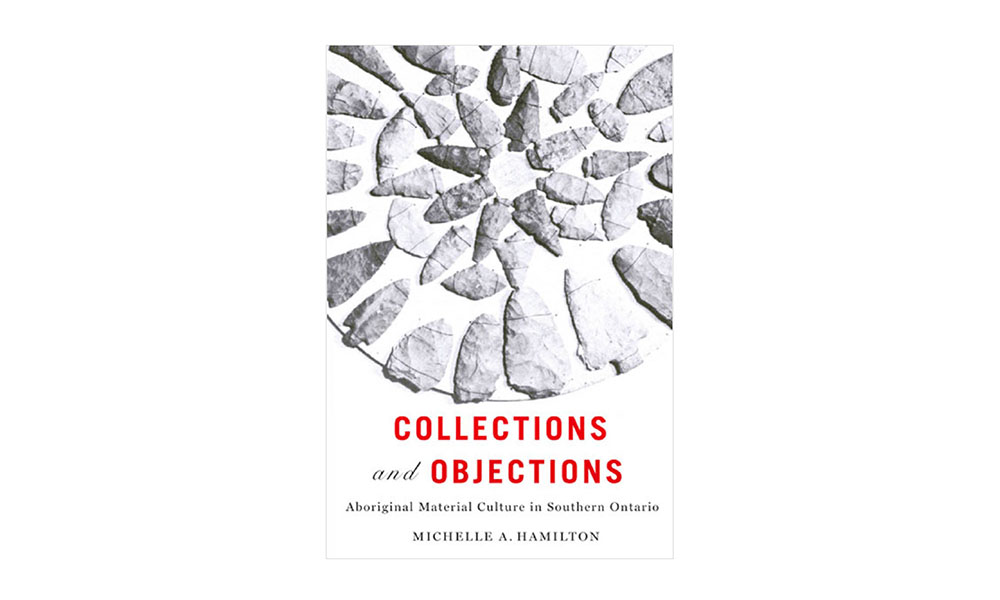This week’s post discusses how the professionalization of archaeology in Ontario created a culture of paternalism over Indigenous people. Archaeologists used these notions of paternalism to justify their desecration of Indigenous burial sites and non-consensual collection of artifacts. Western University historian, Michelle Hamilton’s book, Collections and Objections: Aboriginal Material Culture in Southern Ontario, 1791-1914. Hamilton’s work shows that professionalizing archaeologists viewed themselves in a paternal light in taking on the burden of another culture that they believed would soon be extinct. These sentiments of paternalism informed the founding of other Indigenous collections like the Huron Missionary Museum.
At the heart of Hamilton’s book is David Boyle. Over his lifetime (1841-1911), Boyle served as secretary of the Ontario Historical Society, Curator of the Canadian Institute, and Curator of the Ontario Provincial Museum of Toronto. [1] In these capacities, Boyle travelled across Canada to visit Indigenous communities and collect artifacts to store and study them.
Over his career, David Boyle became a major influence in moving archaeology away from a means of bolstering one’s cabinet of curiosity and toward a professional practice of scientific study and analysis. [2] Hamilton argues that the professionalization of archaeology falls into three general categories. Before 1851, there were few if any professional standards in archaeology. At this point, collectors mostly focused on expanding their cabinet of artifacts. The cabinet of curiosities describes typically private collections of artifacts aimed at collecting diverse and unique objects with little focus on education and more on prestige or personal fulfillment in aiming to collect an encyclopedia’s worth of items. [3] There was little consistency in how these collectors obtained and cared for their artifacts. From 1851-to 1884, the industry started moving toward standardizing practices. Some archaeologists formed the Canadian Institute and tried to bring some consistency in how archaeologists collected and kept artifacts. They began separating themselves from amateur archaeologists who had no standards in their methods of collecting and preserving. From 1884-to 1911, there was a further push toward standardizing archaeology and separation from amateurs. Boyle’s career spanned much of this later professionalizing period. However, this professionalization translated into expanded efforts for collecting Indigenous artifacts and disrespecting cultural beliefs in the name of scientific study. [4]
In a sentiment that would go on to guide the work of many early professional archaeologists, Boyle felt that no item was off-limits so long as a professional collector aimed to study it for the benefit of scientific study and knowledge. [5] This view included the justification of desecrating Indigenous graves. Nearly all types of burials are sacred, and it is especially the case for many Indigenous peoples. They believe that the body has two spirits, one that leaves the body and one that remains to protect it. Disturbing the grave, including the body and the objects left with it, angers this spirit, and disrespects the beliefs of that person in death. [6] The expansion of professional archaeology and separation from amateurs justified excavations regardless of local support. Hamilton demonstrates how professionalizing archaeologists believed that they were the only people capable of accurately preserving the story of Indigenous people. Hamilton argues that Boyle saw Indigenous people as unable to care for their history: “By placing primacy on the archaeological and historical record, and an allegedly objective scholarly reading of both, Boyle could suggest that he, not Aboriginal community leaders, was the learned expert.” [7] Boyle saw himself as the expert on Indigenous history and argued that Indigenous histories belonged in the care of museums. He contended that modern Indigenous cultures had little connection to the Indigenous peoples of the past and thus had little reason to hold onto these artifacts. Essentially, Boyle did not trust Indigenous peoples to manage their history and took it upon himself to place their artifacts and remains in museums even if it was against their will. [8]
These paternal sentiments of taking on the burden of another culture informed the founding of other collections like the Huron Missionary Museum. Huron University alumni, for example, went to Tanzania to open an Anglican school in 1913, only two years after the Huron Missionary Museum first opened. The school was originally named Huron College but soon after became St. Philips Theological Seminary. It trains local people in preparation for becoming ministers in the Anglican Church. [9] The first principal of the college was T.B.R. Westgate, a Huron College graduate and Anglican missionary. [10] In essence, the people on these early Huron College expeditions acted as paternal guides aiming to convert Indigenous Tanzanians toward their Christian beliefs. These missionaries acted similarly in some ways as archaeologists like Boyle had in propelling their beliefs on Indigenous cultures. As evidence of their work, Westgate and several other missionaries brought Indigenous artifacts back from their mission. Many of these artifacts ended up at the Huron Missionary Museum and Westgate’s name remains attached to many of them as a donor.
There is little known about the circumstances in which missionaries collected the artifacts now found in the Huron Missionary Museum collection. However, many of the items remain in Huron University College as remnants of the school’s colonial legacy.
Notes
[1] Michelle A. Hamilton, Collections and Objections: Aboriginal Material Culture in Southern Ontario (Montreal, QC: McGill-Queen’s University Press, 2010), 8. [2] Hamilton, Collections and Objections, 15. [3] Thomas Jefferson and Joyce Henri Robinson, “An American Cabinet of Curiosities: Thomas Jefferson’s ‘Indian Hall at Monticello,’” Winterthur Portfolio 30, no. 1 (1995): pp. 41-58, https://doi.org/10.1086/wp.30.1.4618481, 44. [4] Hamilton, Collections and Objections, 169. [5] Hamilton, Collections and Objections, 172. [6] Hamilton, Collections and Objections, 85-86. [7] Hamilton, Collections and Objections, 169. [8] Hamilton, Collections and Objections, 160-161. [9] Phanuel L. Mung’ong’o and Moses Mantonya, “The Anglican Church of Tanzania,” in The Wiley-Blackwell Companion to the Anglican Communion, ed. Ian S. Markham et al. (Oxford: Wiley-Blackwell, 2013), 210-211. [10] Gordon Goldsborough, “Memorable Manitobans: Thomas Buchanan Reginald Westgate (1872-1951),” Manitoba Historical Society, January 25, 2020, http://www.mhs.mb.ca/docs/people/westgate_tbr.shtml.